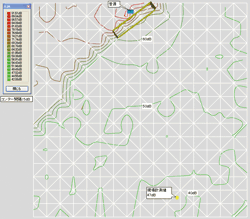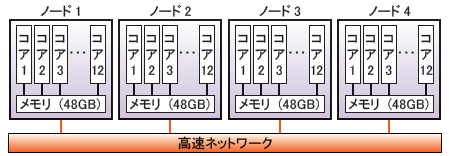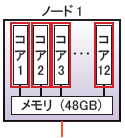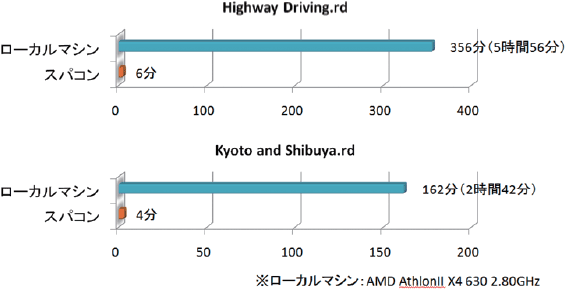In this service the term "noise" is used, however this service
allows the analysis of "the air vibration which can be perceived by
the human ear".
The methods of expressing the sound behavior digitally can be classified
to the following two.
- Discretization of the equation of wave phenomenon such as boundary element
method
- Assumption of finite number of sound line using the sound linearity
Our simulation service uses the latter "Sound line".
The configuration elements of noise simulation data are "sound source",
"obstacle", "sound receiving point".
(1)Sound source
The omnidirectional point sound source is assumed. The sound power level
can be given in multiple frequency configurations.
The sound source cannot be directly moved, however, the effective time
can be set per sound source. Therefore, you can place multiple sound sources
on the moving path, and setup each effective time based on the speed to
provide the same effect as moving. The direction of sound line is assumed
to be the global direction, and the number of sound line can be changed
based on the predefined rule.
(2)Obstacle
For example, obstacles are the road surface, other vehicles, and the structures/buildings
on the road. If the sound line reaches each surface, the reflection or
transmission are considered. Depending on the reflection ratio, both the
reflection and transmission occur. In this case, it is considered by dividing
the sound source into two lines.
In this simulation, the diffraction and interference are not considered.
(3)Sound receiving point
The sound receiving points can be arranged in any position. It is thought
to be omnidirectional. As for the sound line to the sound receiving point,
the perpendicular drawn from the sound receiving point to the sound source
is assumed, and if it is shorter than specific length based on the distance
from sound source to receiving point, this sound line is considered as
valid.
|






